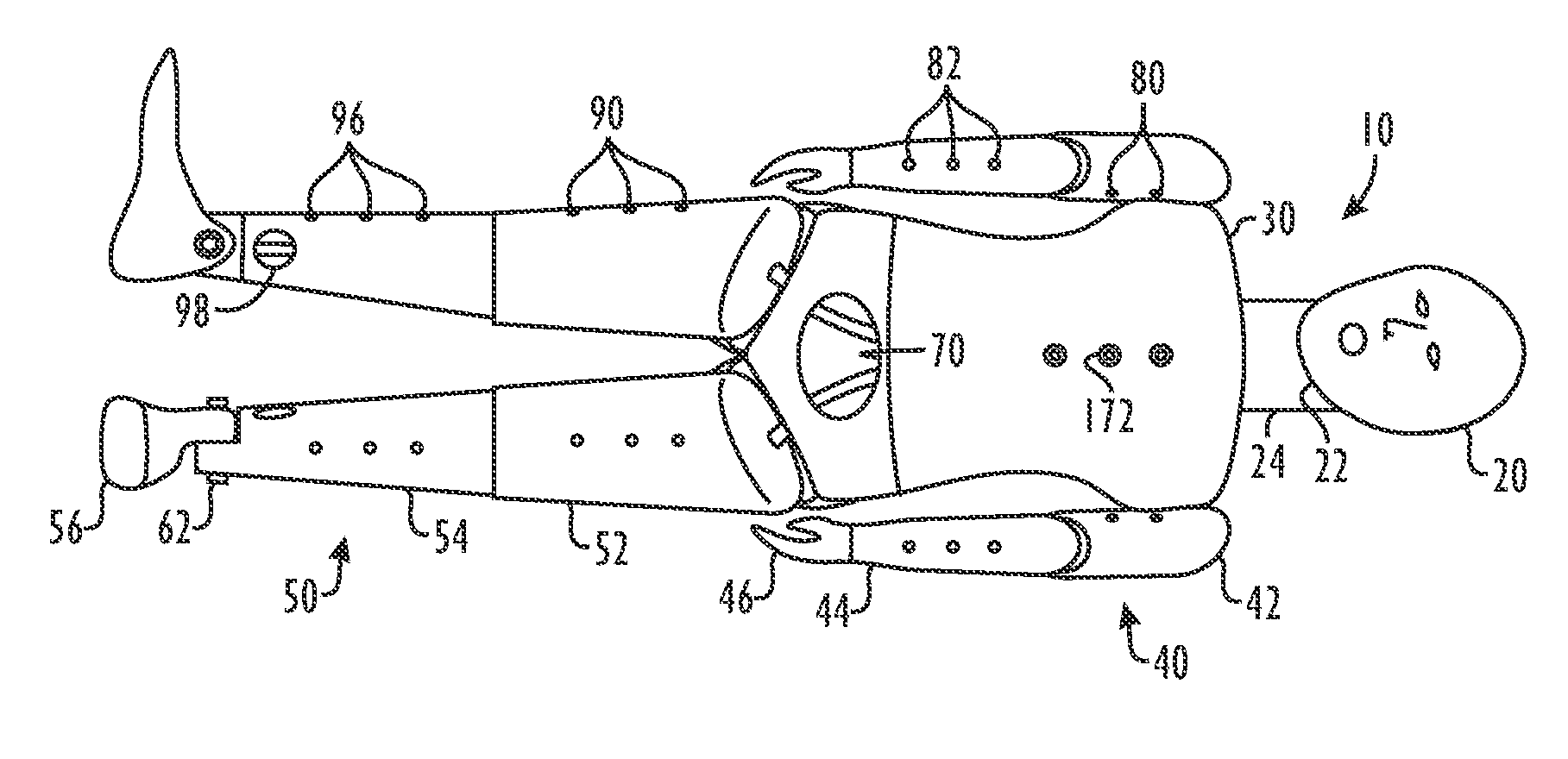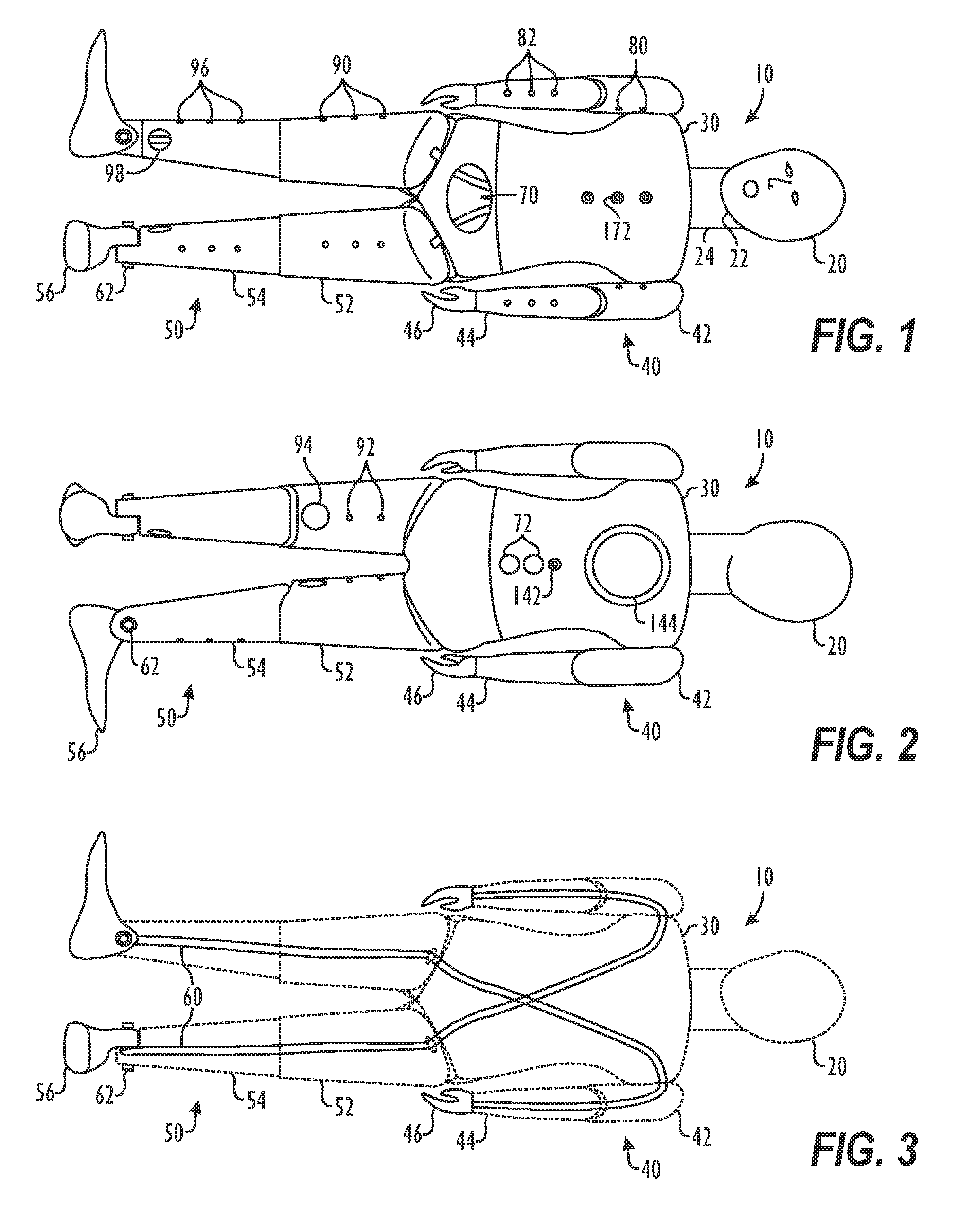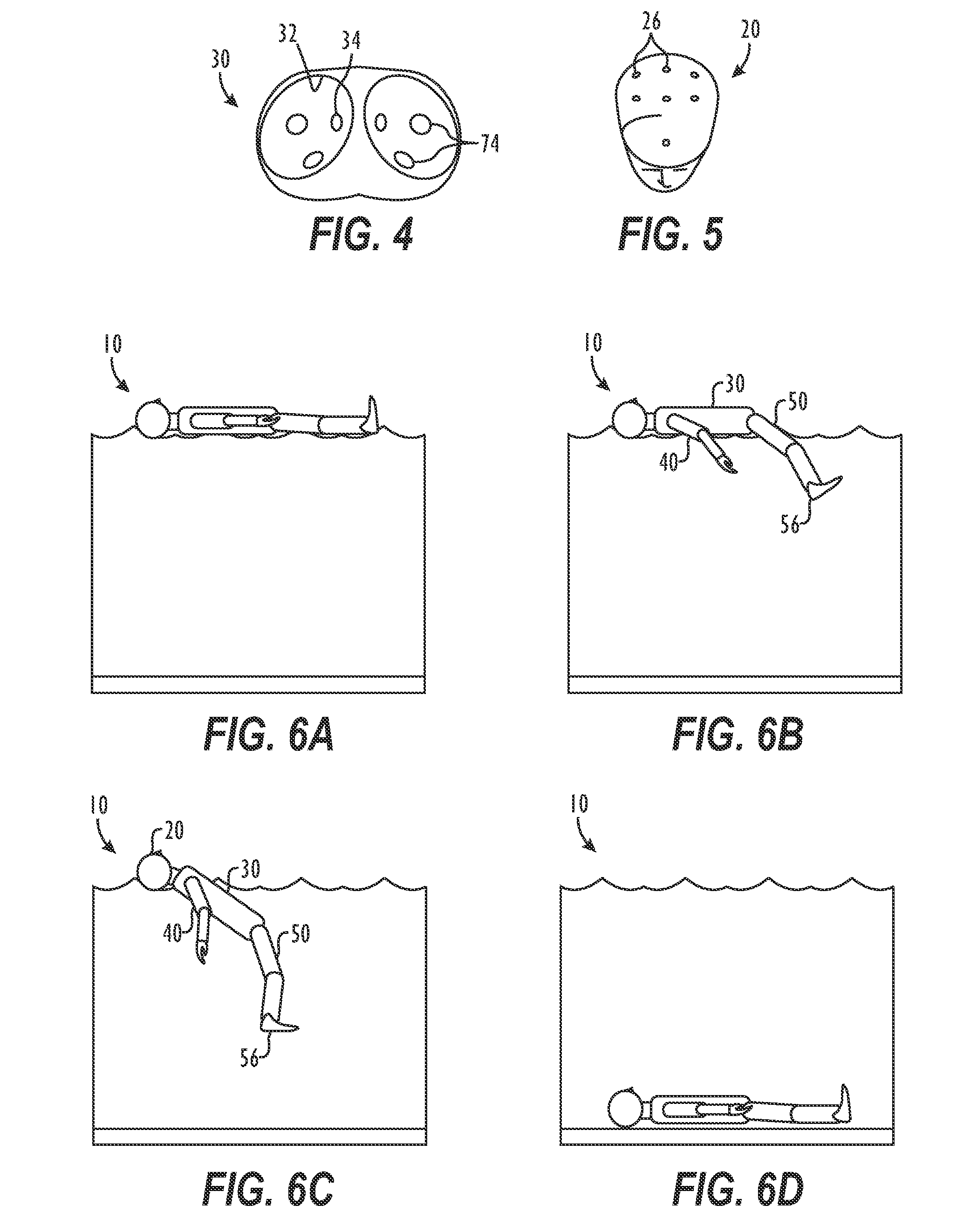Aquatic rescue testing doll
a doll and water technology, applied in the field of aquatic dolls, can solve the problems of holding a significant amount of water weight, unable to simulate a proper chest compression technique, and using existing manikins to test the detection skills of lifeguards is less than ideal,
- Summary
- Abstract
- Description
- Claims
- Application Information
AI Technical Summary
Benefits of technology
Problems solved by technology
Method used
Image
Examples
Embodiment Construction
[0014]A submersible aquatic doll can be used for testing and training the detection, rescue, and lifesaving skills of lifeguards or other rescue personnel. The doll has a torso and has a pair of arms, a pair of legs, and a head all connected to the torso. The torso, arms, and legs are all substantially hollow and define a plurality of holes for filling the doll with water. The head defines a plurality of holes in the top to allow captured air to escape as the doll sinks in water. A pair of feet are weighted and attached to the legs for breaking the surface of the water and causing the legs to sink initially when the doll is positioned on the water. When the doll is out of the water, the head preferably can be turned from side to side for a rescuer to simulate a water clearing technique during a rescue. In addition, the head can be tilted and has a moveable jaw for a rescuer to simulate a jaw thrust method in cardiopulmonary resuscitation (CPR) for opening an airway of a victim with ...
PUM
 Login to View More
Login to View More Abstract
Description
Claims
Application Information
 Login to View More
Login to View More - R&D
- Intellectual Property
- Life Sciences
- Materials
- Tech Scout
- Unparalleled Data Quality
- Higher Quality Content
- 60% Fewer Hallucinations
Browse by: Latest US Patents, China's latest patents, Technical Efficacy Thesaurus, Application Domain, Technology Topic, Popular Technical Reports.
© 2025 PatSnap. All rights reserved.Legal|Privacy policy|Modern Slavery Act Transparency Statement|Sitemap|About US| Contact US: help@patsnap.com



